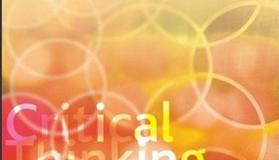Skill 3: Distinguishing Between Arguments and Non-arguments
Critical thinking involves distinguishing what is relevantfrom other forms of information.
Disagreement
Argument is not the same as disagreement. You can disagree with someoneelse’s position without pointing out why you disagree or persuading them tothink differently. In critical thinking, there is a distinction between aposition, an agreement, a disagreement, and an argument.
Examples:
Genetic engineering really worries me. I don’t think it should be allowed.
I don’t know much about genetic engineering but I agree with you.
I know a lot about this subject and I agree with you.
That doesn’t convince me. I think genetic engineering is really exciting.
Genetic engineering should be curtailed because there hasn’t beensufficient research into what happens when new varieties are created withoutnatural predators to hold them in check.
The possibilities for improving health and longevity through genetic engineeringoffer hope to sufferers of many conditions that currently don’t have aneffective cure. We should be pushing ahead to help these people as quickly aswe can.
Activity: Identify for each whether theauthor is presenting an argument or a disagreement.
Passage1:
Several young people die each year training for theconstruction trades. Legislation is in place to cover health and safety atwork, but some employers argue that this is too expensive to implement andonerous to monitor. They say that young people are not responsible enough atwork and that there is nothing further they can do to prevent their deaths.That cannot be a good argument.
Passage2:
I cannot agree with people who say that smackingchildren does them no harm. Of course it harms them, both physically andemotionally. Hitting another person is assault and it would not be toleratedagainst an adult. Many adults have no sense of the cruelty of smackingprecisely because they were smacked themselves as children and erroneouslyregard this as normal. They then go on to assault other vulnerable people,perpetuating a vicious cycle.
Descriptions
Descriptions give an account of how something isdone, or what something is like. They do not give reasoned accounts of how orwhy something occurred nor do they evaluate outcomes. Descriptive detail is notintended to persuade to a point of view.
Example:
The solution was placed in a test-tube and heatedto 35 centigrade. Small amounts of yellow vapor were emitted. These wereodorless. Forty milliliters of water were added to the solution, which was thenheated until it began to boil. This time, grey steam was emitted. Waterdroplets gathered on the side of the test-tube.
Explanations
Explanations can appear to have the structure of anargument. They may include statements and reasons, leading to a finalconclusion. However, instead of for persuading, they are used to account forwhy or how something occurs, or to draw out the meaning of a theory, anargument or other message.
Example:
It was found that many drivers become drowsy whentravelling and that long hours at the wheel were a major cause of accidents. Asa result, more stopping places were set up along motorways to enable drivers totake a break.
Activity: Read the passages below, and identify whethereach is an example of an argument, an explanation or a description. How do youknow?
Passage 1:
The solar system is an inhospitable place not just for humans but also formachines. Despite this, over 8000 satellites and spacecraft were launched intospace from more than 30 countries between 1957 and 2004. Over 350 people havehurtled through space, not all returning to earth. Launch sites based near theequator, such as that at Kourou in Guyana, enable rockets to make best use ofthe earth’s rotation.
Passage 2:
New-born babies may lack the capability to monitor their own breathing andbody-temperature during the first three months of life. Babies who sleepalongside their mothers could benefit from learning to regulate their breathingand sleeping, following the rhythm of the parent. These babies wake morefrequently than those who sleep alone. Moreover, mothers who sleep next totheir babies are better able to monitor their child for movement during thenight. Consequently, it may be safer for new-born babies to sleep with theirparents.
Passage 3:
Both of the toy mice were the same size and shape so the dog was confused.Although one mouse was red and one was blue, Misty was unable to tell whichmouse was his toy simply by looking. Like other dogs, he needed to sniff themboth, using his sense of smell to tell them apart, because he couldn’tdiscriminate between different colors.
Passage4:
Globalwarming remains an issue of widespread political debate, sometimes split alongparty political lines, especially in the United States. Many of the largelysettled scientific issues, such as human responsibility for global warming,remain the subject of politically or economically motivated attempts todownplay, dismiss or deny them – an ideological phenomenon categorized byacademics and scientists as climate change denial. The sources of funding forthose involved with climate science – both supporting and opposing mainstreamscientific positions – have been questioned by both sides. There are debatesabout the best policy responses to the science, their cost-effectiveness andtheir urgency. Climate scientists, especially in the U.S., have reportedofficial and oil-industry pressure to censor or suppress their work and hidescientific data, with detectives not to discuss the subject in publiccommunications. Legal cases regarding global warming, its effects, and measuresto reduce it, have reached American courts. The fossil fuels lobby and freemarket think tanks have often been identified as overtly or covertly supportingefforts to undermine or discredit the scientific consensus on global warming.


